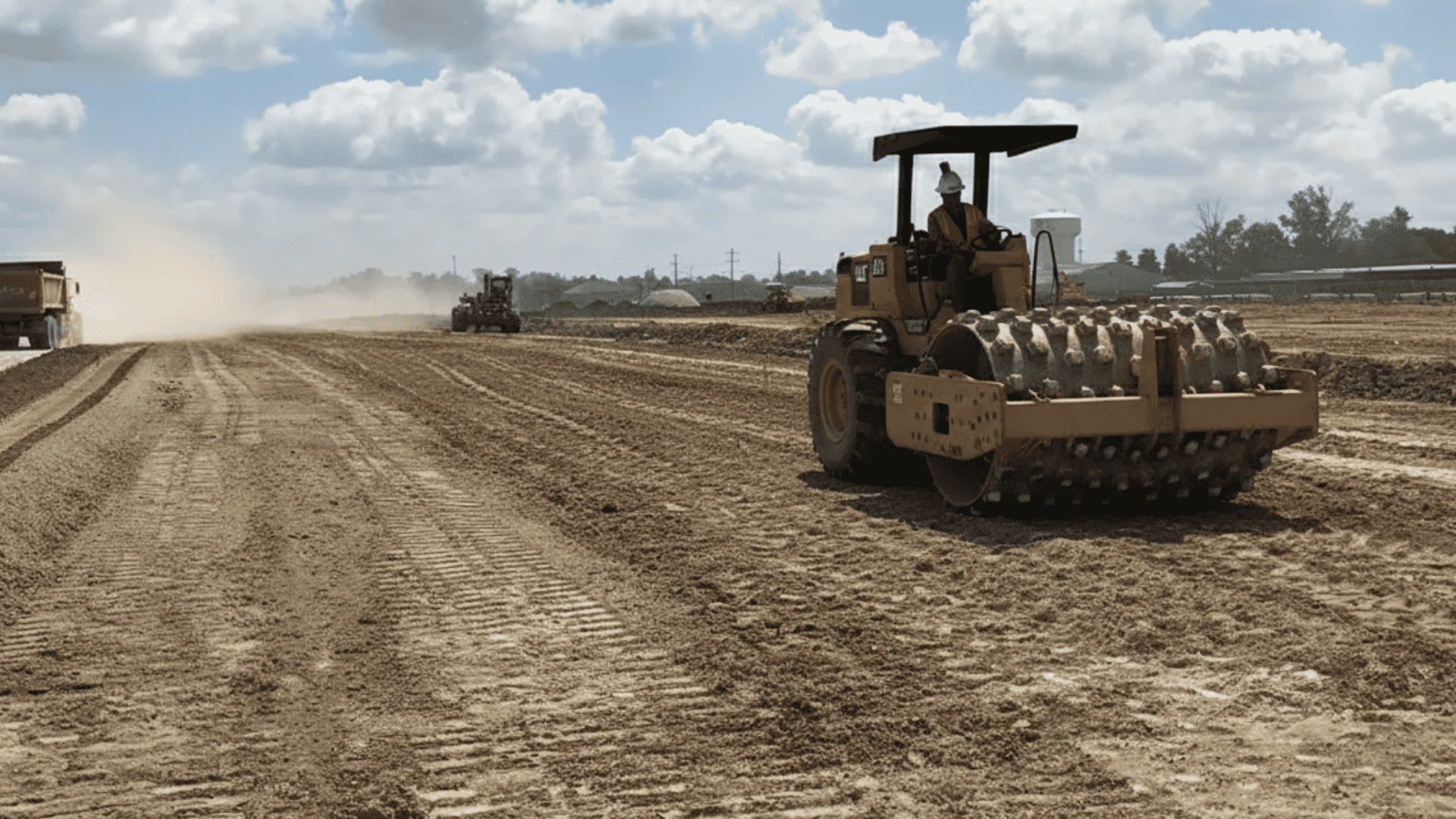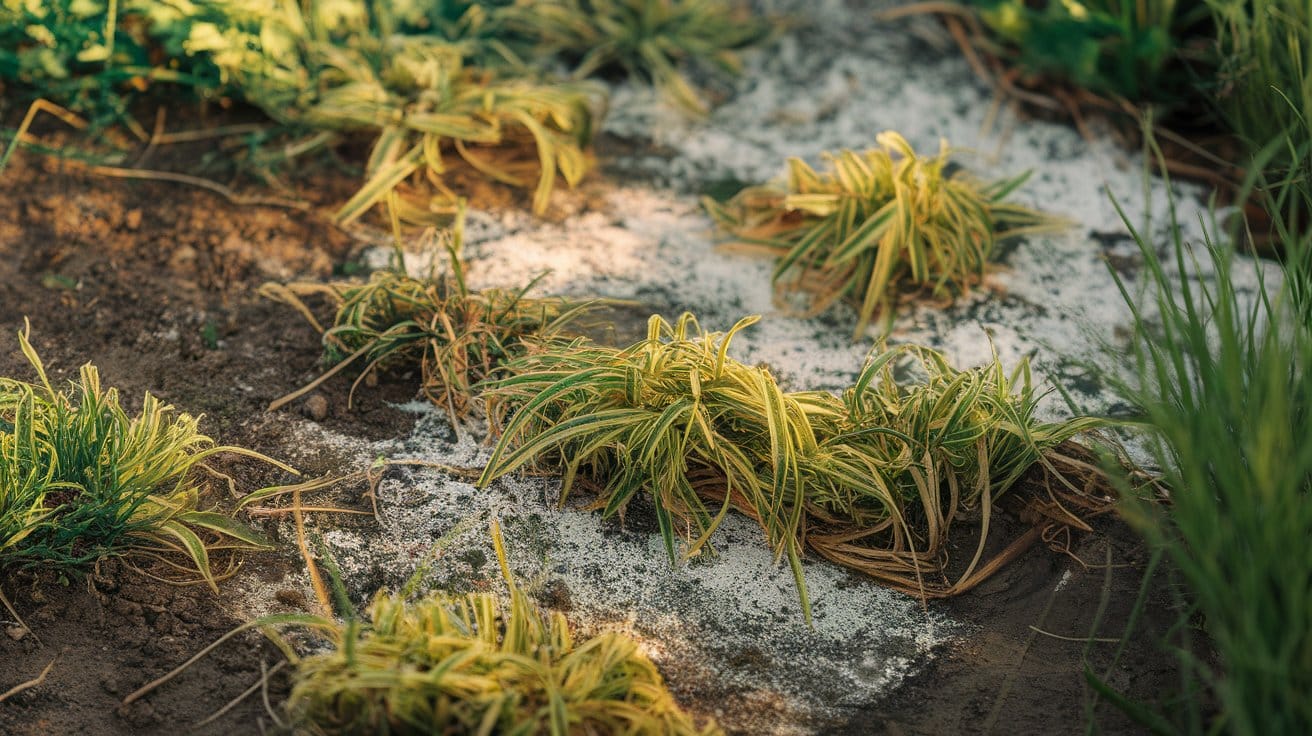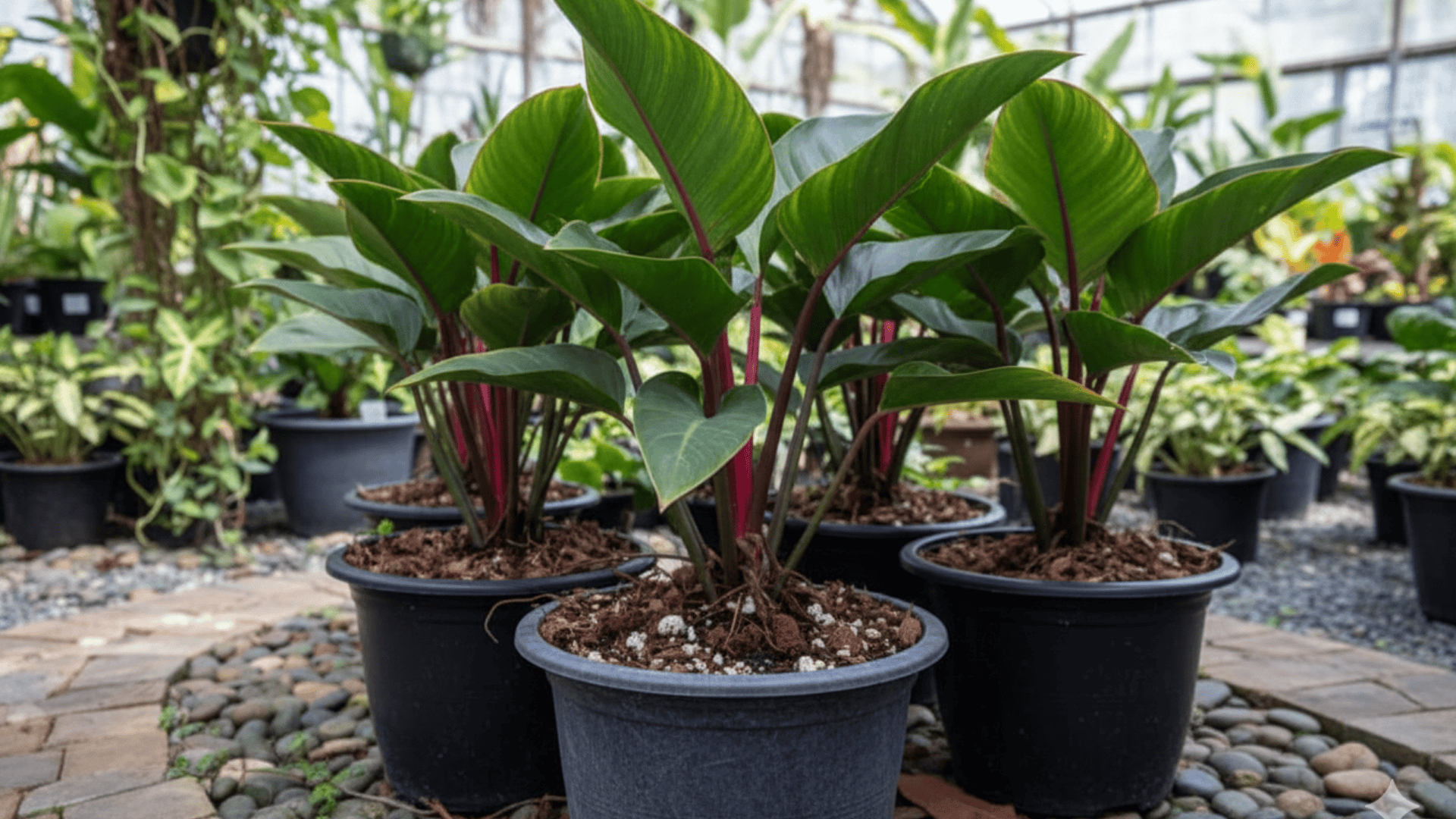Weak soil can cause serious problems in construction, leading to cracked roads, uneven building foundations, and early structural failure.
Soil stabilization helps solve these issues by strengthening the ground and making it more stable.
The process involves using specific materials and techniques to improve the soil’s load-bearing capacity, allowing it to support heavier structures without breaking down.
Construction teams rely on this method for roads, runways, and building foundations.
It’s also cost-effective because it uses local soil instead of expensive imported materials.
In this post, we’ll cover the three main types of soil stabilization, the materials used, and how to choose the right method for your project.
What is Soil Stabilization?
Soil stabilization is the process of improving the strength, structure, and durability of soil to make it suitable for construction and agricultural use.
It involves altering the physical or chemical properties of soil using stabilizers such as lime, cement, or organic materials.
This process helps reduce soil movement, prevent erosion, and increase load-bearing capacity.
In construction, stabilized soil forms a firm base for roads and buildings, while in agriculture, it supports healthy crop growth by improving soil consistency and water retention.
Methods of Soil Stabilization
There are three main ways to stabilize soil, each working differently to solve specific problems.
1. Mechanical Stabilization
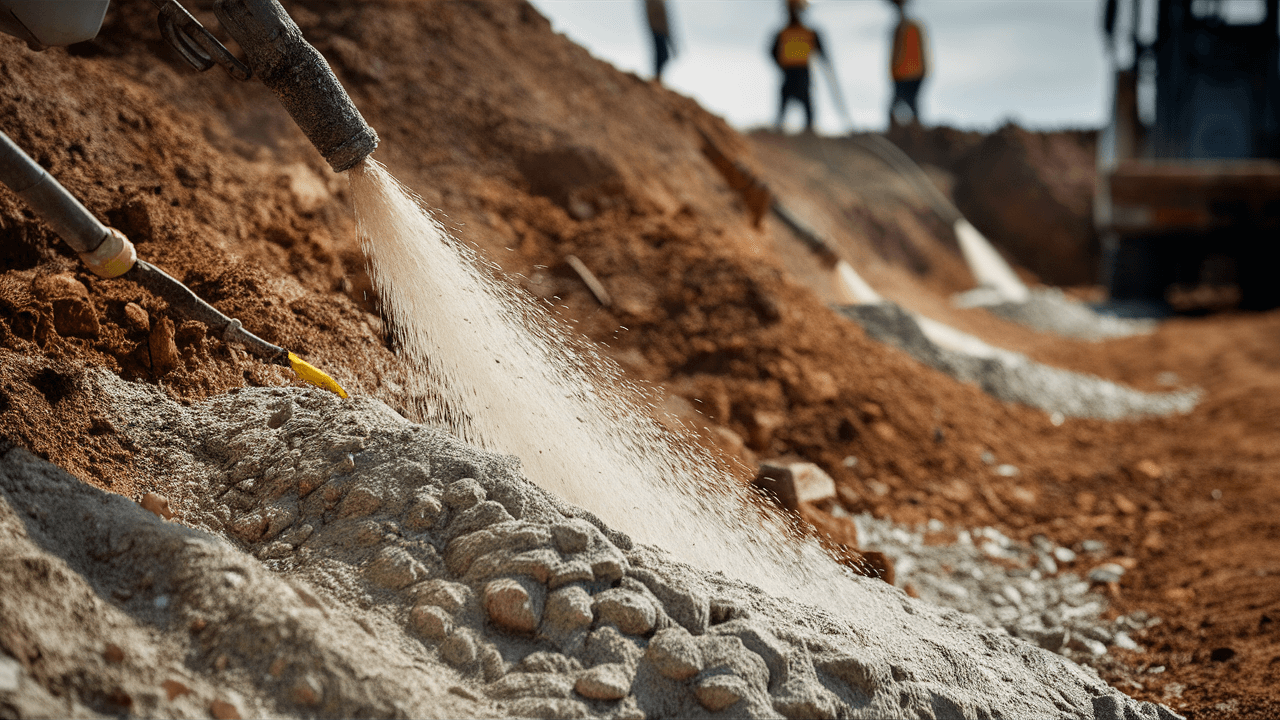
This method uses physical force to improve soil.
Compaction is the most common technique – heavy machines press soil particles closer together.
Geosynthetics like fabric mats also help by spreading the weight evenly across weak areas.
| Advantages | Limitations |
|
Quick results, cost-effective for large areas, no chemicals needed. |
Works best on specific soil types; effects may not last long-term |
2. Chemical Stabilization

This approach adds materials that react with soil to create stronger bonds.
Lime works well with clay soils, while cement creates hard surfaces.
Polymers act like glue, binding particles together.
| Advantages | Limitations |
| Long-lasting results, works on various soil types | Some chemicals may affect groundwater or plant growth |
3. Biological Stabilization
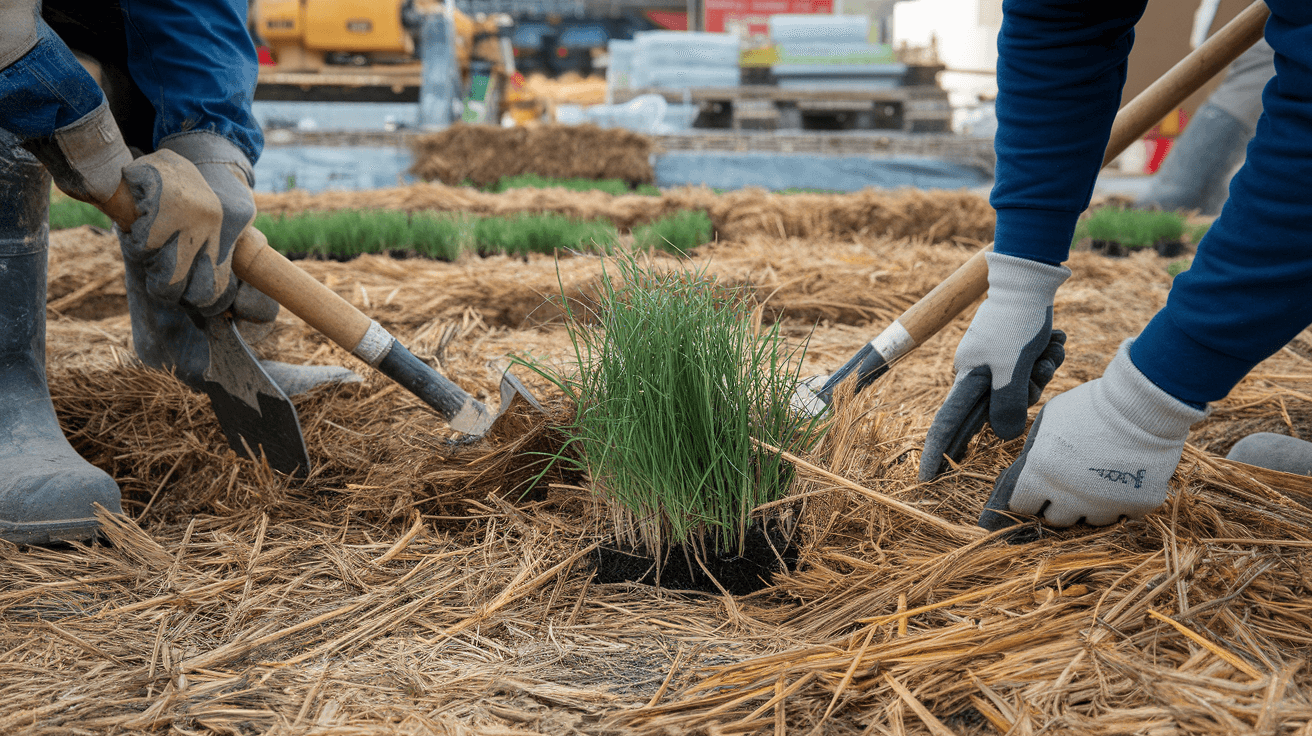
This natural method uses living materials to strengthen soil.
Vegetation roots hold soil together, while organic materials like compost improve soil structure over time.
| Advantages | Limitations |
| Eco-friendly, improves soil health naturally | Supports wildlife, reduces environmental impact, and creates habitat |
4. Bituminous Stabilization
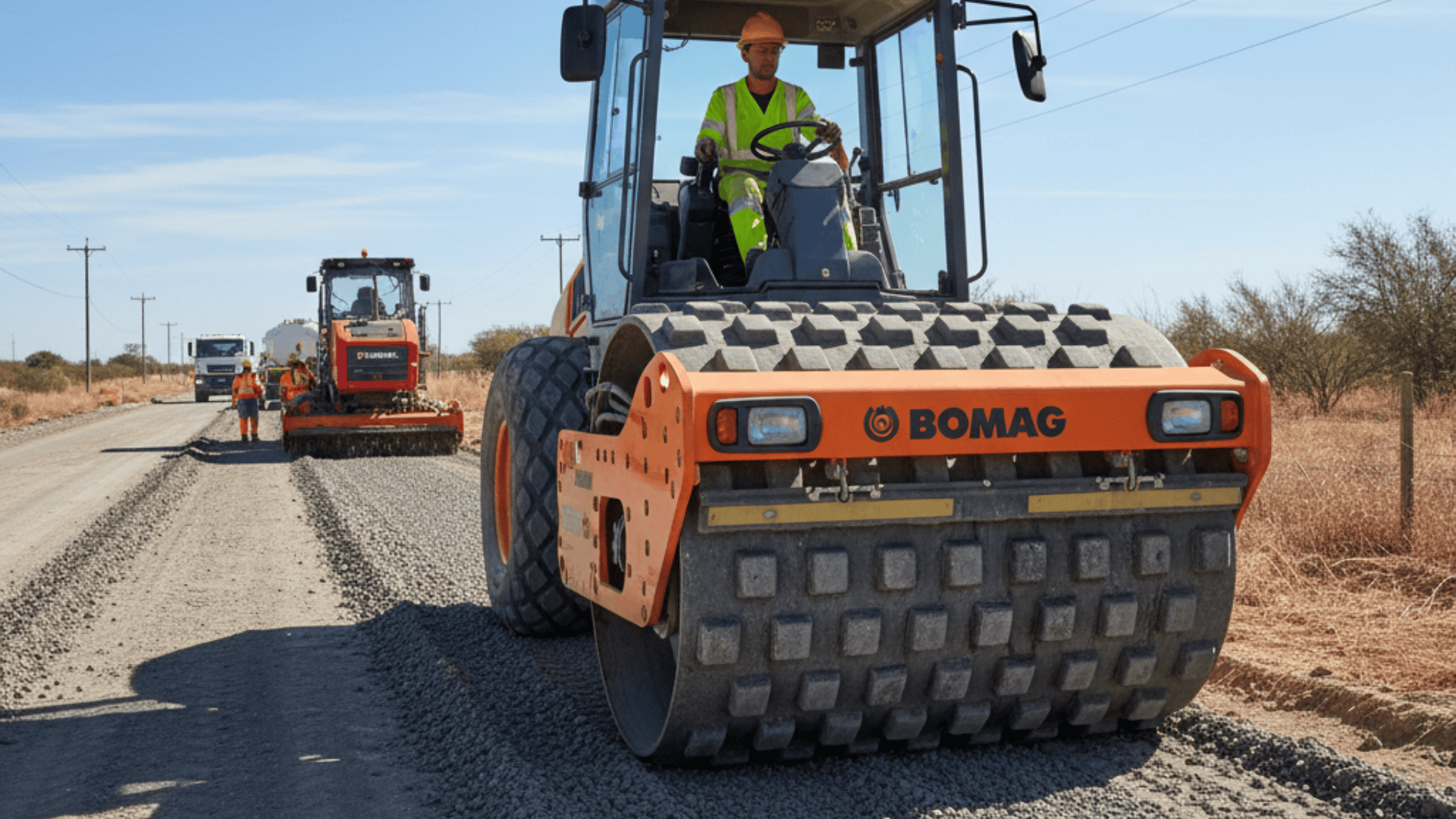
This method mixes bitumen with soil to create a strong, water-resistant layer suitable for pavements and road bases.
Bitumen coats the soil particles, preventing moisture penetration and improving flexibility under traffic loads.
It ensures a stable surface even during wet conditions.
| Advantages | Limitations |
| Excellent moisture resistance and durability | Unsuitable for regions with extreme temperature variations |
5. Thermal Stabilization
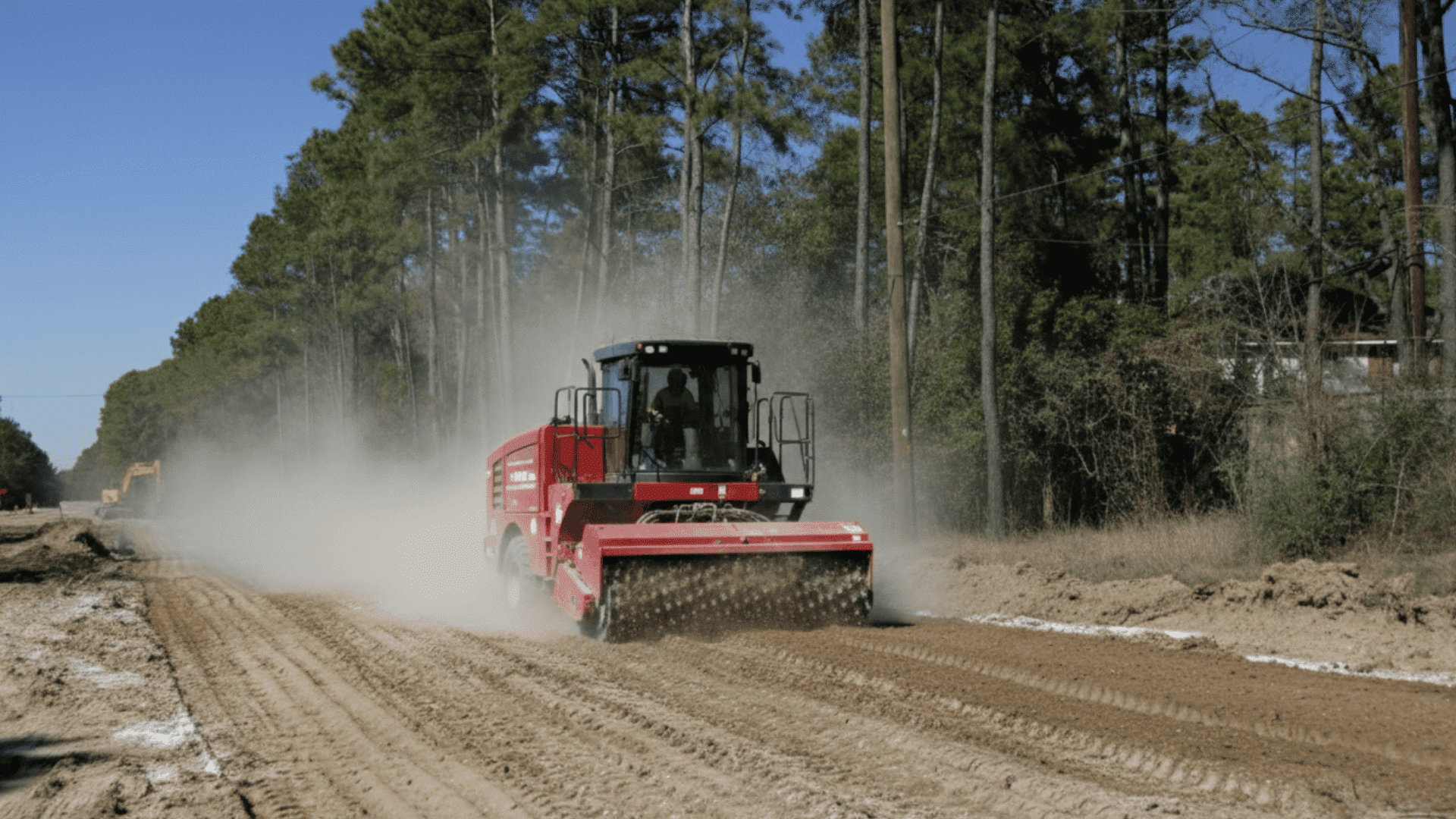
Thermal stabilization modifies soil properties by heating or freezing it to adjust moisture content and structure.
It is commonly used in areas with challenging weather conditions or where frost action affects soil performance.
This technique improves soil bearing strength and reduces shrink-swell behavior.
| Advantages | Limitations |
|
Highly effective for problem soils in extreme climates. |
Energy-demanding and expensive for large-scale use. |
6. Electrical Stabilization

Electrical stabilization involves applying an electric current to saturated soils, especially clays, to remove excess water and increase density.
The process strengthens weak soils by improving compaction and reducing compressibility.
It is mostly used for specialized engineering projects requiring precision.
| Advantages | Limitations |
| Ideal for dewatering and strengthening fine-grained soils | High energy costs and limited scalability |
Materials Used for Soil Stabilization

The right material can make the difference between success and failure in soil stabilization projects.
These are the main categories of materials used.
1. Organic Materials
Natural materials from plants and animals work well for many soil problems.
- Sawdust helps sandy soils hold water better.
- Straw prevents erosion on slopes and adds structure to loose soil.
- Manure provides nutrients while binding soil particles together.
These materials break down slowly, feeding the soil and creating long-term improvements.
They work best for agricultural applications and environmental restoration projects.
2. Inorganic Materials
Man-made and mineral materials offer strong, lasting results.
- Cement creates the hardest stabilization, perfect for roads and building foundations.
- Lime works well with clay soils, reducing their stickiness and improving drainage.
- Fly ash, a byproduct from coal plants, acts similarly to cement but costs less.
These materials create permanent changes in soil structure.
They’re ideal for construction projects that need maximum strength and durability.
3. Additives and Polymers
Modern science has created specialized materials for specific soil problems.
- Enzymes speed up natural soil processes, helping particles bond faster.
- Synthetic polymers act like super-strong glue, binding even the finest soil particles together
These materials work in small amounts but deliver powerful results.
They’re especially useful for challenging soils that don’t respond well to traditional methods.
Soil Stabilisation Process
I’d like to credit Awesome Earthmovers for their informative video that visually demonstrates the complete process step by step.
Applications of Soil Stabilization
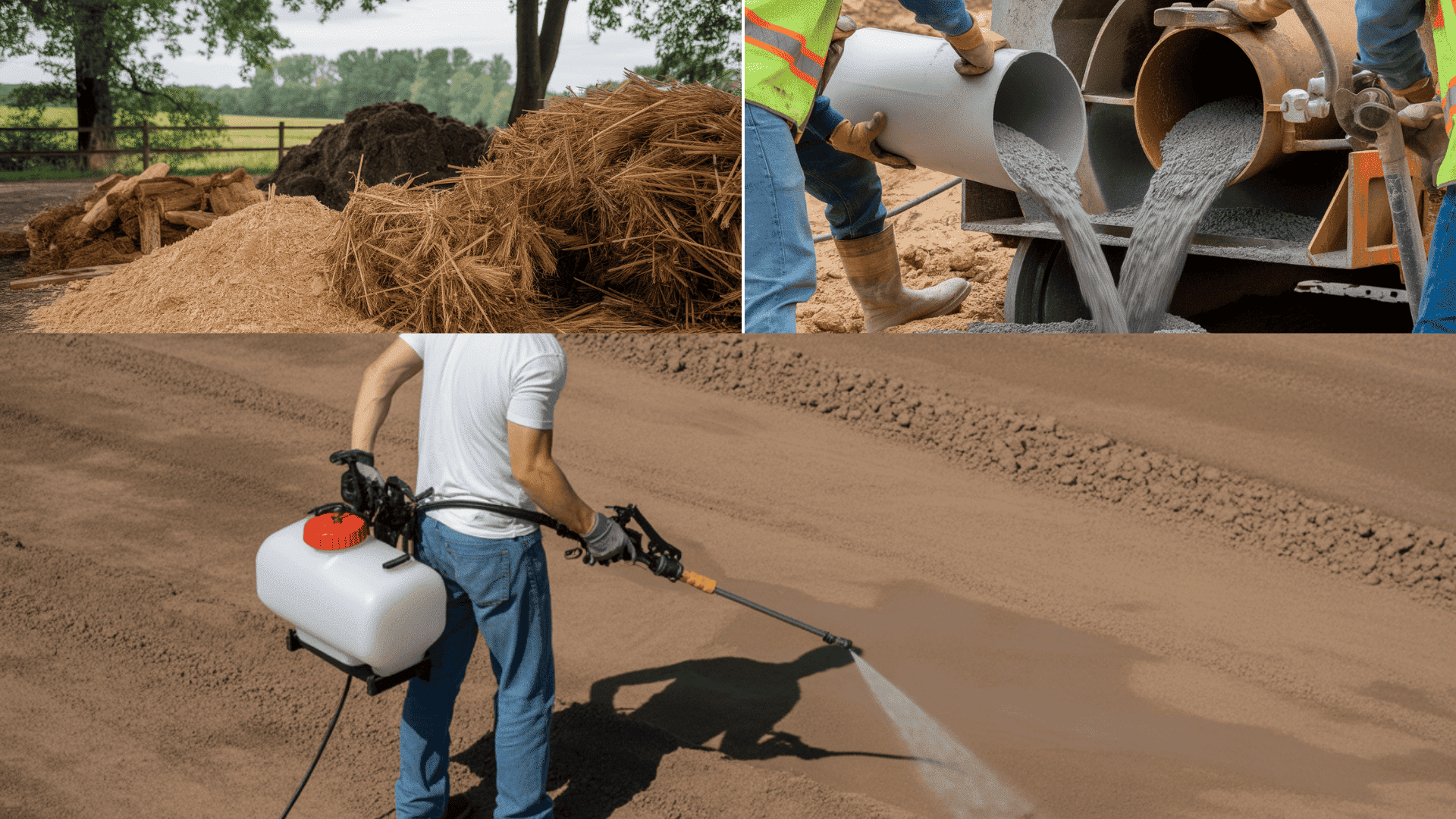
Soil stabilization plays a crucial role in various sectors, from infrastructure development to agriculture and environmental conservation.
This is how it benefits each:
1. Road Construction
Soil stabilization is widely used in road construction to improve the strength and longevity of roads.
Stabilizing the soil underneath the road surface increases the load-bearing capacity, which helps the road withstand heavy traffic and weather conditions.
This process reduces the need for frequent repairs, making roads more durable and cost-effective in the long term.
2. Agriculture
In agriculture, soil stabilization helps improve soil fertility and prevent erosion.
It makes the soil more resistant to wind and water erosion, which can lead to the loss of valuable topsoil.
Stabilized soil retains moisture better and provides a stronger foundation for crops, promoting sustainable farming practices and improving crop yields over time.
3. Environmental Conservation
Soil stabilization also plays a vital role in environmental conservation, particularly in controlling erosion and restoring degraded lands.
By stabilizing the soil, it prevents erosion from washing away vital nutrients and helps protect natural habitats.
This process is often used in land reclamation projects, where soil stabilization helps restore balance to ecosystems affected by deforestation or overuse.
Benefits of Soil Stabilization
Soil stabilization offers multiple advantages for both construction and agriculture, improving soil quality and long-term performance.
- Increased Soil Strength: Improves load-bearing capacity for construction and agriculture.
- Erosion Control: Reduces soil erosion, protecting land and infrastructure.
- Cost Savings: Lowers long-term maintenance costs.
- Sustainability: Promotes eco-friendly practices and natural soil preservation.
- Enhanced Water Retention: Improves moisture retention, benefiting crops.
- Better Soil Fertility: Helps retain nutrients for healthier crops.
Choosing the Right Soil Stabilizer
Choosing the right soil stabilizer depends on factors like soil type, project needs, and environmental impact. This is what to consider:
- Soil Type: Clay soils often need lime; sandy soils benefit from mechanical methods.
- Project Requirements: Roads use chemical stabilizers; agriculture prefers organic or biological ones.
- Environmental Impact: Choose eco-friendly options like organic or bio-based stabilizers for sustainability.
Conclusion
Soil stabilization enhances soil strength, prevents erosion, and prolongs the lifespan of infrastructure and agricultural projects.
Even if for roads, foundations, or land reclamation, using the right soil stabilizer ensures better performance and cost savings.
By understanding soil types and project needs, you can choose the most effective stabilizer for your specific requirements.
For more guidance on selecting the right soil stabilization methods, consult with industry experts who can help tailor solutions to your project needs.
Ready to start your soil stabilization project? Contact us today to find the best solution for your needs!
Frequently Asked Questions
What Happens if you Put Too Much Lime on Soil?
Too much lime makes the soil too alkaline, blocking plants from absorbing nutrients. Plants develop yellow leaves and grow poorly in over-limed soil.
What Are Signs of Acidic Soil?
Moss grows easily, weeds like dandelions thrive, and plants have yellow leaves. A soil pH test below 6.0 confirms acidic conditions.
Which Month Is Best to Put Lime Down?
Fall months (September through November) work best for lime application. This gives lime time to react with the soil before the spring planting season.

